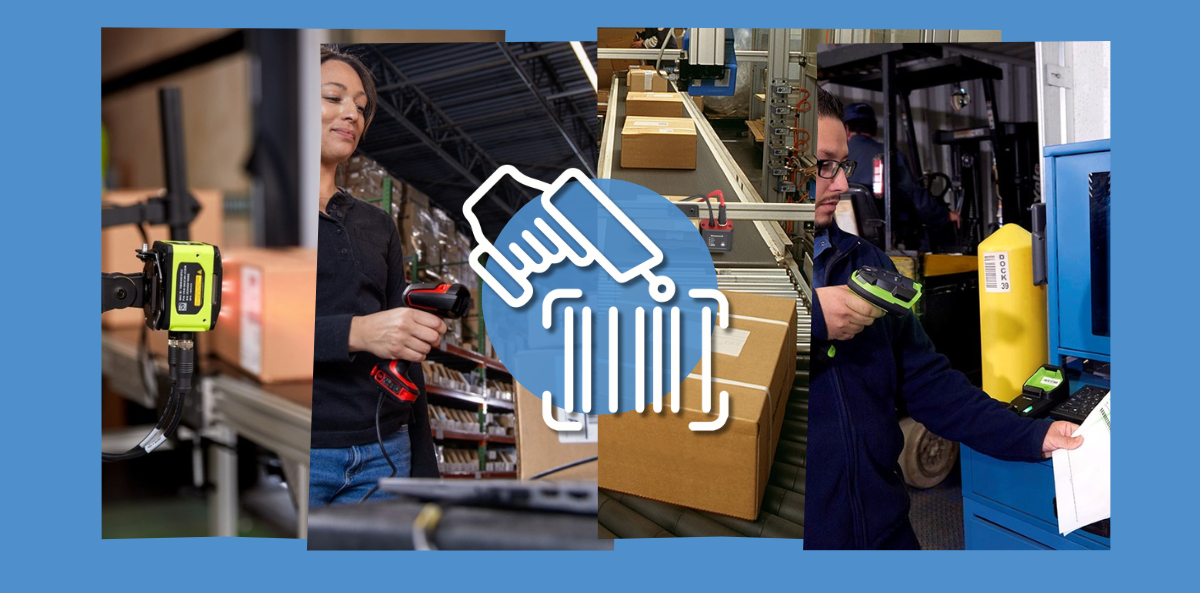
Barcode reader – which one to choose? Comparison of models for store, warehouse and production
A barcode reader is a device for reading and decoding information stored in the form of a barcode or 2D code. Such a scanner allows you to quickly obtain the most important information about a product. Modern readers also have the ability to record images and read codes from a distance. So what models will be suitable for a store, warehouse and in a manufacturing plant? From this article you will learn:
- What is a barcode scanner
- What are the types of scanners
- What kind of code scanner for a store, office, production and warehouse
- What to pay attention to when choosing a scanner.
What is a barcode reader and what is it used for?

This is a relatively small device that reads barcodes and transmits the data contained in them to a computer. Readers with a laser scanning module emit a beam of light that hits the bar code. The light then reflects off the surface of the code, and the differences caused by the presence of dark and light bars are analyzed. The reflected light is converted into an electrical signal, which is the number stored in the form of a code. After decoding, the barcode reader sends the interpreted data to the computer system, which allows it to identify the product or perform another planned action.
Area imager scanners capture the image (barcode and 2D code) similarly to digital cameras and then, with the help of appropriate software, decode it. Because they contain no moving parts, they are more resistant to drops and shocks. Compared to laser scanners, they can read damaged, low-contrast codes from a phone or monitor screen and at higher speeds.
Barcode readers – types
The basic division includes:
- wired and wireless handheld scanners
Wired handheld scanners are devices that are connected by cable to a computer. Wireless handheld scanners, on the other hand, are based on technology including Bluetooth. It is through it that the data read from the barcode is sent to the computer. Such readers have a wide range of applications. Used in commerce, laboratories, office and administrative areas, they allow fast reading of barcodes and 2D codes. For industrial and warehouse applications, we recommend ruggedized models, which have a durable and sealed housing. Rugged industrial scanners can read barcodes and 2D codes from a distance of up to 20m, codes on shrink-wrapped pallets, folded labels, damaged and poorly printed codes.
- wrist-worn scanners
Wrist-worn scanners are a solution for warehouses, manufacturing and retail. The operator does not have to hold the scanner in his hand, but a “ring” with a small reader is placed on the finger. A read trigger button mounted on the top or side of the reader makes the reader extremely easy to use.

- stationary industrial readers
Stationary industrial readers are installed on production lines and in warehouses. They allow automatic reading of codes from goods and packages moving on conveyor belts and production lines. Industrial scanners have high reading capabilities for barcodes, 2D codes printed on various surfaces, partially damaged and low-contrast codes.
Which code scanner for store, office, production and warehouse

Barcode scanners, thanks to their variety and functions, are used in specific applications and industries:
- production lines,
- warehouse and logistics,
- offices and administration, archives, libraries,
- store, pharmacy, service outlets.
For production lines, the most common device of choice is an industrial desktop scanner due to its durability and ability to work in harsh conditions. On the other hand, in warehouses and in the logistics industry, wireless and wearable scanners work well, allowing the freedom to read data from barcodes of goods placed in bulk or individual packages, as well as at great heights. Offices, archives and libraries usually use a wired handheld scanner. It can also be found in stores or pharmacies.
What to look for when choosing a barcode reader?

Each type of barcode scanner has slightly different features and functions. Therefore, in order to maximally match the device to the needs of a particular enterprise, it is worth to know the most important features of the device and make a choice based on them. First of all, you should pay attention to:
- reading range
- working environment,
- type of codes,
- communication interfaces,
- compatibility with ERP/WMS systems.
For warehouses, the reading range is crucial, as it will facilitate work and data collection. Code readers with long range allow the freedom to scan a code even over long distances, which is especially important for high storage warehouses. Also important is the working environment, that is, the conditions in which the scanner will be used. We should choose a different device for the production floor and another for the office. It is also worth paying attention to the type of codes the company uses, whether they are 1D or 2D, and you can both and adjust the type of scanner to them. A big role in the convenient use of code scanners is played by the communication interface. It is a good idea to check which one a particular device uses, whether it is USB, Bluetooth, RS232.
If you need to select a reader for your industry, contact our specialist!
